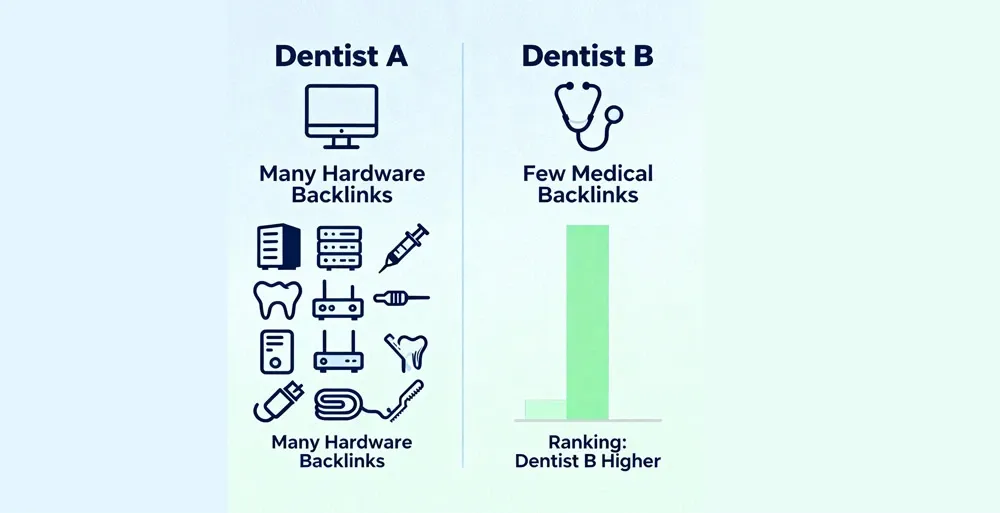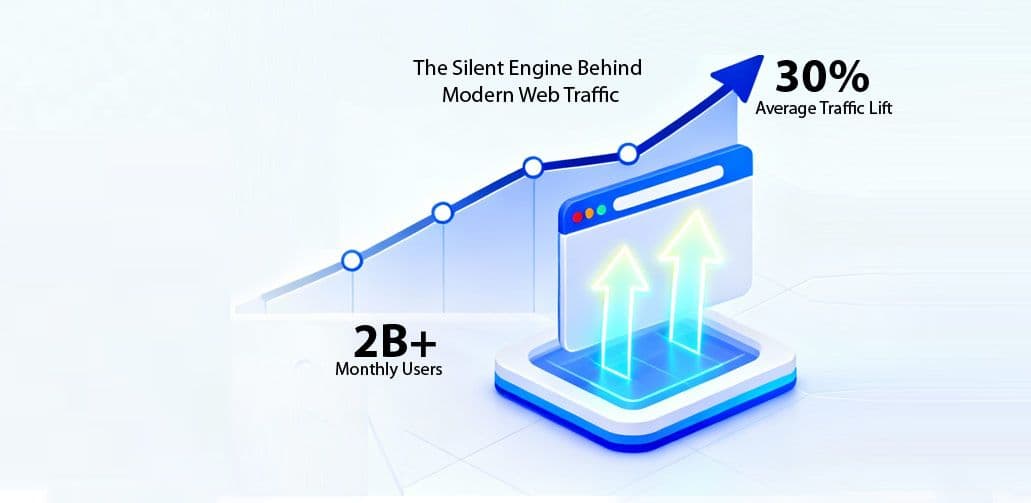
Backlinks have always been one of the most debated topics in the SEO industry. Everyone seems to have their own belief, some buy backlinks, others build them organically. For some, backlinks are essential for ranking, while others call them an outdated concept.
But what’s the real story? Are backlinks still as powerful as they once were, or are we already living in a future where they no longer matter? Let’s explore.
A Look Back: The Birth of Backlinks
To understand the evolution of backlinks, we must go back to the early 1990s, the primitive days of search engines. Back then, search algorithms were quite basic. If someone searched for “Best Dentist in Delhi,” the results showed pages that repeated that exact phrase the most number of times. It was simple keyword matching.
However, this method was easy to manipulate. SEO practitioners began using tricks like hiding keywords on a webpage, black text on a black background, white text on white background, or even invisible text with font size zero. While humans couldn’t see these keywords, search engines could, leading to misleading rankings and poor user experience.
Enter Google: A Creative Solution
The founders of Google introduced a revolutionary approach to solve this issue. Instead of just reading on-page text, they evaluated how many other pages were linking to it. This gave birth to the “backlink” concept, the foundation of Google’s famous PageRank algorithm.
The logic was simple yet brilliant - If multiple pages are linking to one specific page, it indicates that people find that page valuable or credible. Hence, such a page deserves a higher rank.
This formed the basis of what came to be known as the “Random Surfer Model.” The model assumed that a user could randomly click any link on a webpage. Pages that received more inbound links were considered more likely to be visited, and therefore, more authoritative.
Topic-Sensitive PageRank: Quality over Quantity
By 2002, Google refined this model with the Topic-Sensitive PageRank update. The focus shifted from the number of backlinks to their relevance.
For instance:
- Dentist A had backlinks from ten hardware websites.
- Dentist B had backlinks from just two medical websites.
Even with fewer links, Dentist B’s website ranked higher, because the backlinks came from relevant, topic-specific domains.
This update made SEO more complex. Random backlinks from unrelated websites began losing value. Yet, many SEO professionals continued chasing quantity over quality, assuming any backlink would boost ranking, a misconception that persisted for years.

The Reasonable Surfer Model: Context Starts to Matter
In 2010, Google took another major step by replacing the Random Surfer Model with the Reasonable Surfer Model. This update recognized that not all links on a webpage are equally valuable. For example, users rarely click links in a footer or sidebar, but they often engage with links within the main content body.
Therefore, links positioned within relevant content, especially near the top of the page, received more weight. This was a major shift that made contextual backlinks far more valuable than random or hidden links.
Additionally, Google introduced multiple sub-systems to analyze backlinks, considering factors like:
- Anchor text quality
- Domain authority (e.g., .gov, .edu, or reputed news sites)
- Link placement and visibility
- Spam detection systems
As a result, backlinks could no longer be measured simply by their existence, their position, context, and credibility determined their worth.
The AI Era: Understanding Content Beyond Links
Fast forward to the present, the age of Artificial Intelligence where you need to understand how to optimise your website for AI Overview. With advanced Language Learning Models (LLMs) and vector embeddings, search engines can now understand the actual meaning and context of a webpage in real-time. They no longer rely heavily on backlinks to judge relevance.
Today, a page’s ranking primarily depends on how well its content semantically matches the user’s query. Backlinks only come into play when two or more pages offer equally strong, relevant content. In such cases, high-quality backlinks act as the deciding factor to break the tie.
This means backlinks haven’t disappeared, they’ve simply evolved. Their role has shifted from being a primary ranking factor to a supporting credibility signal.
What This Means for SEO Professionals
If you’re still relying on outdated backlink-building tactics, such as mass guest posting, comment links, or random directories, it’s time to rethink your strategy.
Here’s the new rule:
- Content quality comes first.
- Relevance comes second.
- High-authority backlinks come third.
Even a thousand low-quality backlinks can’t help if your content is weaker than your competitor’s. However, one or two contextual backlinks from highly trusted sources can make a noticeable difference.
The Bottom Line: The TIC Approach to Smarter SEO
Backlinks aren’t dead, but ordinary backlinks are. In the AI-driven search landscape, your website’s success depends less on link count and more on content quality, semantic relevance, and authoritative relationships__.
So, focus on creating content that truly answers your users’ questions. Once your foundation is strong, earn backlinks from relevant, high-authority sources, not random ones. Because in the evolving world of SEO, the smartest strategy isn’t to chase links, but to deserve them.
At TIC, we specialize in optimizing SEO and AEO strategies that go far beyond traditional backlinking. Our team understands how search algorithms are evolving, and how to align your website with the intelligence of modern search.
Whether you need a full SEO audit, content optimization, or backlink strategy built for the AI era, TIC can help you achieve sustainable visibility and growth.
Get in touch with TIC today to transform your website into a high-performing, search-ready asset that ranks, not just because of backlinks, but because it truly deserves to.





